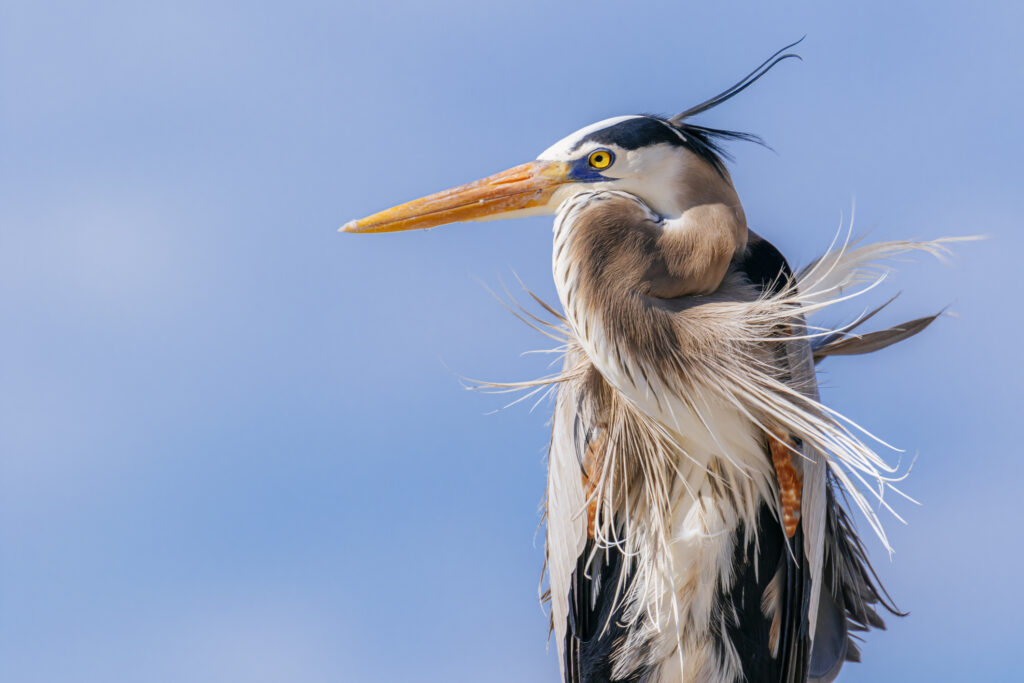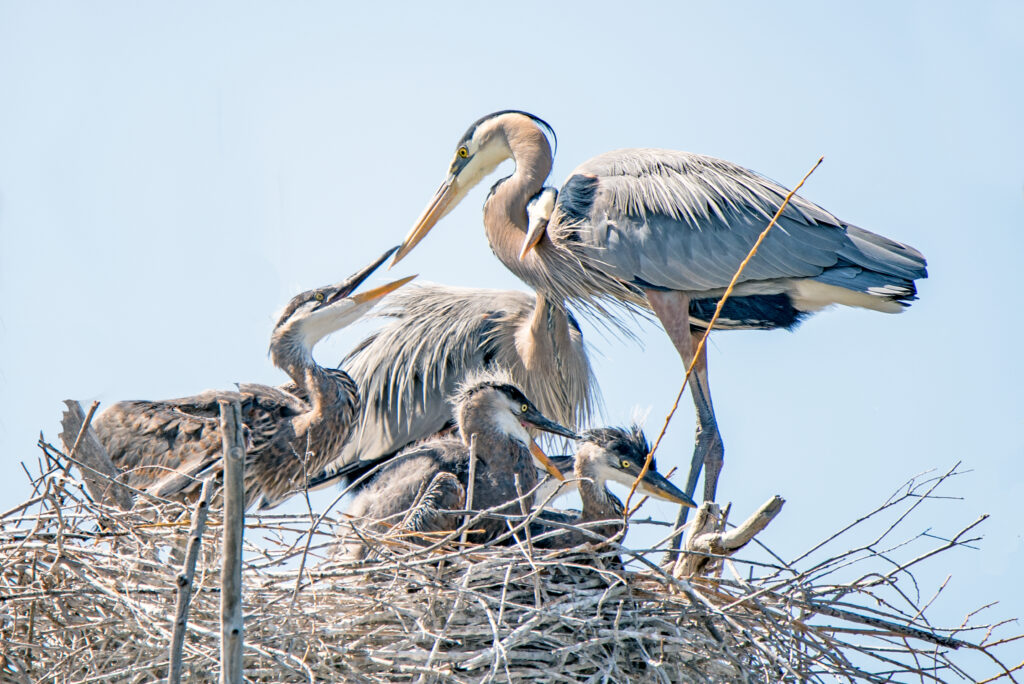
Great blue herons are nesting now, settling down in colonies to protect their young. Look for clusters of large stick nests in tall cottonwood or spruce trees near water. These stunning birds are surprisingly vulnerable to disruptions when nesting.
Western Colorado University has monitored heron nests along the Slate River annually since 2018. The surveys found that “great blue herons do not tolerate human disturbance and will flush, leaving nests unattended and eggs or chicks vulnerable to predation,” according to researcher Pat Magee! in the Spring 2021 issue of The Westerner Magazine. In many of the stressful interactions, people were floating by in boats and paddleboards.
Now the Slate River Working Group that commissioned the study must decide what to do with its findings. “The central question for the Slate River Working Group and the Crested Butte community is not whether herons are disturbed by river recreationists, but whether we should float this river stretch. That is a values question that can’t be answered by science,” writes Magee! in The Westerner.
These squawking beauties have been around for nearly two million years. As we welcome more people to a river-loving lifestyle, let’s save some room for the herons. Remember, if you see wildlife alter their behavior because of your presence, you’re too close or too loud.

